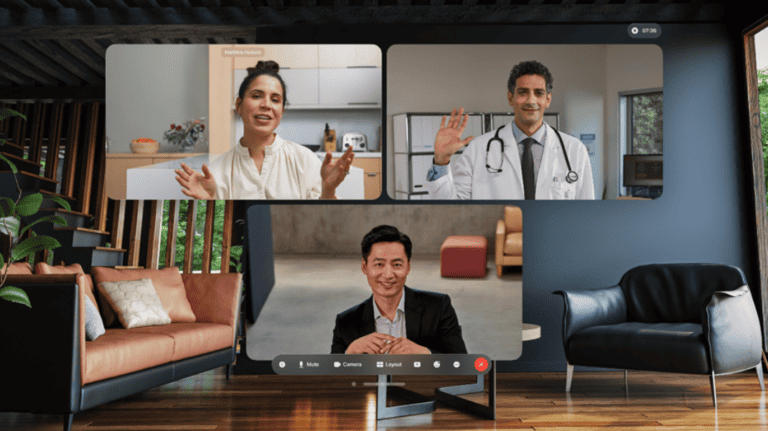Shortly after Zoom was first in to support the Apple Vision Pro, Cisco’s Webex is now following suit. The conferencing app resembles the conventional application in many ways, but with unique features designed to take full advantage of the new Apple headset.
In our analysis a week ago, we noticed that Cisco actually had a lot to say about the traditional Webex app, as opposed to the complete revamp recently implemented by Zoom and Microsoft Teams. We took that to mean a Vision Pro app wouldn’t be on the cards anytime soon. Now Webex is closely following Zoom’s concept by also launching a dedicated Vision Pro app. We didn’t expect Cisco to follow the same path as Zoom on such short notice. After all, Zoom had an announcement ready just before the launch of the Apple headset, while Webex now follows a few days after the official release date.
Tip: Apple Vision Pro: first-generation not ready for business use
Support for Personas is now also present in Webex, which presents 3D models of Vision Pro users’ faces as animated conversation participants. Furthermore, many familiar windows from the Webex app appear in 3D form, including the ability to move them anywhere. Each user can thus choose how to arrange the virtual meeting room. Speakers’ voices are placed in the right place thanks to Spatial Audio, which works to emphasize the three-dimensional nature of a Vision Pro experience.
A familiar story
Apart from this native support and integration with Vision Pro controls, the features are similar to the previously released Webex apps. AI causes background noise to disappear, speaker translations can take place in real-time, and other familiar Webex features are reiterated by Cisco.
In addition to the Vision Pro app, Cisco is launching a variant for Apple TV 4K so that even more users can easily choose Webex.
It will be a while before the spatial computing app is adopted by many users. After all, the Vision Pro is only available in the U.S. for as much as $3,500. As it happens, Apple will be happy with any well-known application that descends on the new visionOS. After all, both YouTube and Netflix have yet to build a native app, although in the former case that is said to be “on the roadmap”.
Also read: Zoom enables hybrid working and enters new markets
